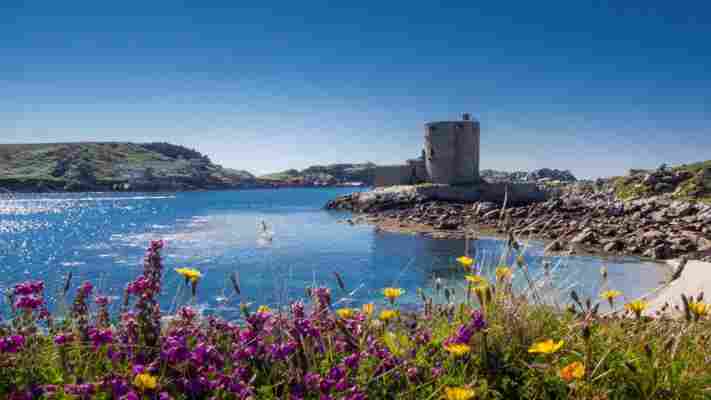October 25,2022
Scilly speeds as Isles get superfast broadband
by Jennifer Cameron inEuropean Style
An undersea cable is being laid to bring superfast broadband to the Isles of Scilly, in one of the UK's most ambitious rural broadband projects to date. The project forms part of the £132m Superfast Cornwall project, which aims to make high-speed fibre broadband available to 95 per cent of premises in Cornwall and the Isles of Scilly by the end of the year.
The 2,200 residents of the Isles of Scilly, which lies 28 miles of the south west tip of Cornwall, have relied on a slow and unreliable broadband service provided by a radio link from Land's End. At present connection speeds are limited to 3Mbps, but the new fibre network could boost speeds to 80Mbps.
In order to hook the Isles of Scilly up to the new superfast network a 939km cable connecting Cornwall to Spain has been cut and redirected. The cable, which was taken out of service in 2006, had been used for 11 years to carry high-speed communications across the world.
To move the cable a 140 metre-long ship has been stationed off the Porthcressa Beach on the main island of St Mary's. This will allow the cable to be pulled ashore, connecting the Isles of Scilly to a new superfast fibre network.
"Superfast broadband will provide a major boost for local businesses and offer the kind of online opportunities, which would have been unthinkable just a few years ago," said Nigel Ashcroft, programme director at Superfast Cornwall.
Around 90 per cent of Cornish premises are already connected to the new fibre network, which is jointly funded by the European Union, BT and Cornwall Council. The Cornish project forms a part of the UK government's wider fibre rollout, which aims to hook up 95 per cent of UK homes to faster broadband connections.
This will see around 90 per cent of UK premises receive speeds of 30Mbps and above, with everyone guaranteed a "universal access" speed of at least 2Mbps. The divide between urban and rural broadband speeds has been a huge issue for years, with regulator Ofcom revealing that while urban speeds fly along at an average of 31.9Mbps, rural areas are struggling on 11.3Mbps. Ofcom chief executive Ed Richards has said "more work" was needed to improve rural broadband. Overall UK broadband speeds are five times faster than they were five years ago.
The rise in speeds is bring driven by rural broadband projects such as the one on the Isles of Scilly. Council chairman Amanda Martin says that while it is hugely ambitious it will have big benefits for local residents:
"Superfast broadband will create exciting opportunities for new and existing businesses. Its installation will also help our islands become more economically viable and provide benefits for future generations," she said.
This isn't the first time an undersea cable has been laid between the UK mainland and the Isles of Scilly. In 1869 a ship was sent to lay a telegraph cable only to overshoot the Islands by five miles, forcing engineers to cut the cable and dump it in the sea.
The ship then arrived triumphantly into Scilly towing the broken cable, at which point tests were faked to make it appear the cable had been laid. A year later another cable was laid, finally connecting the Isles of Scilly to the rest of the UK.

